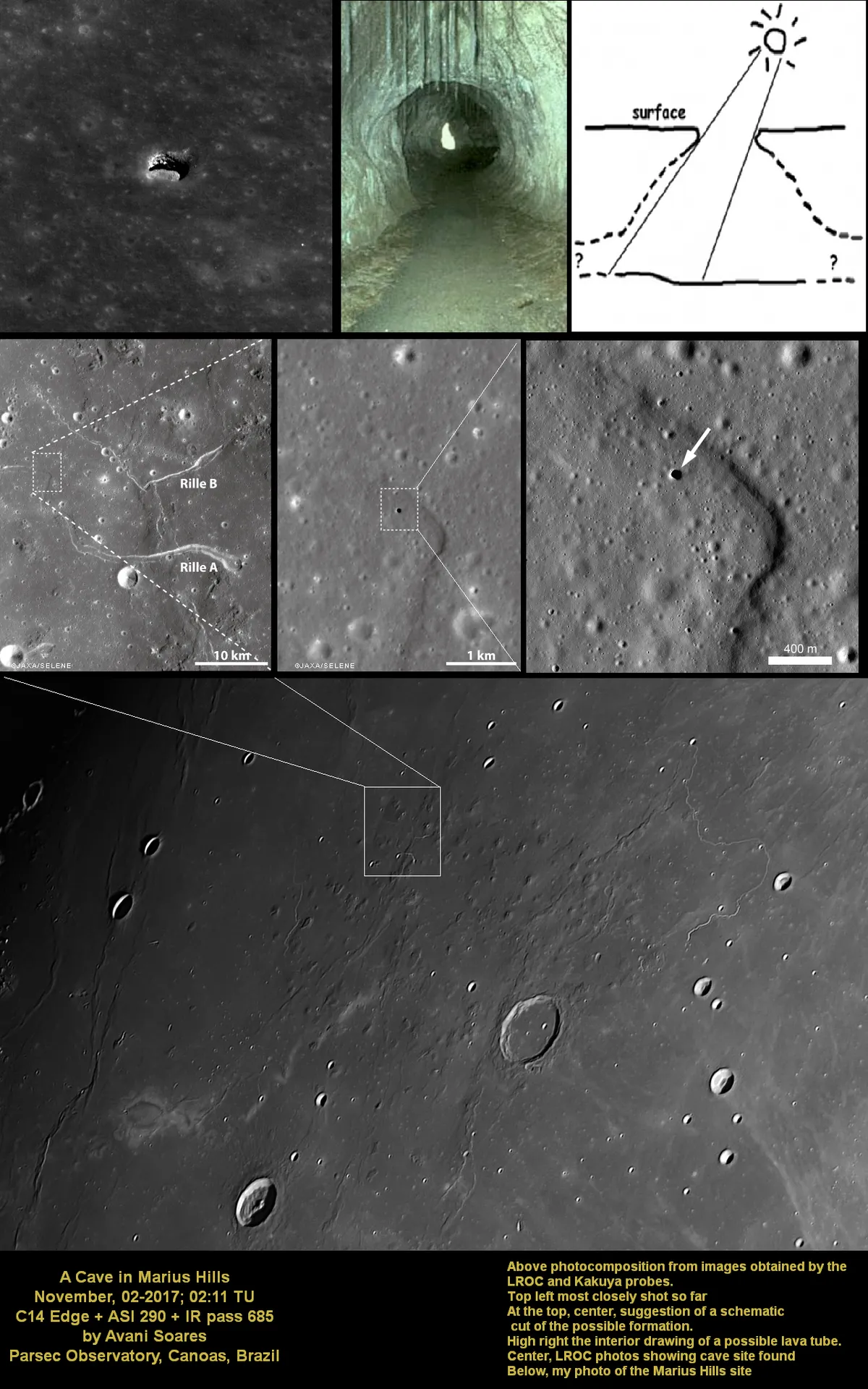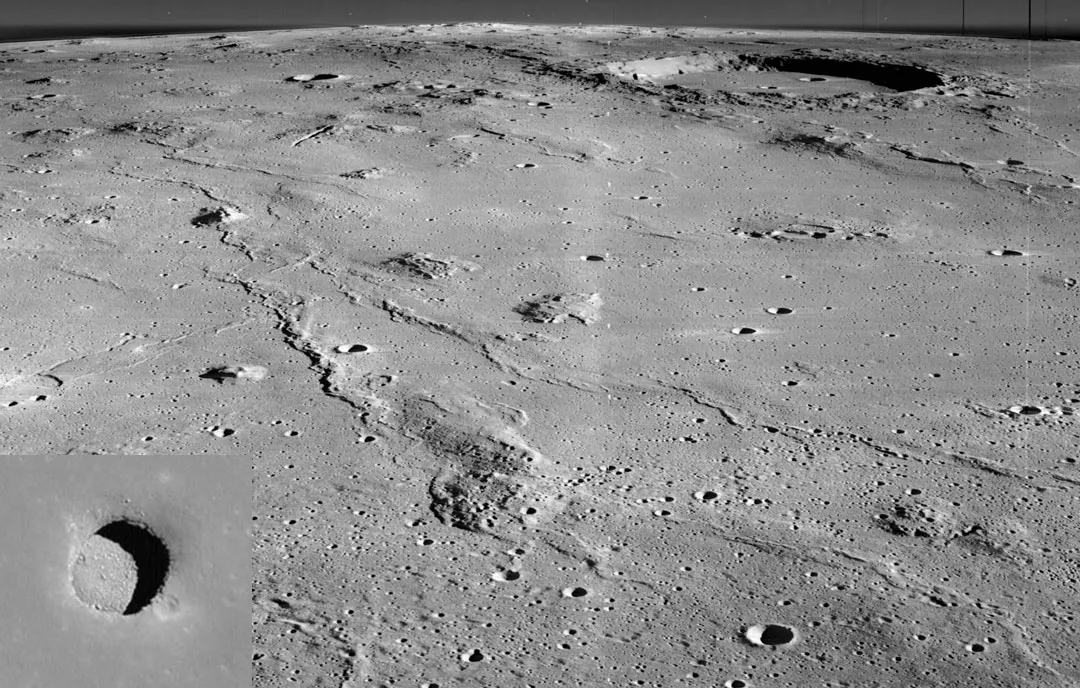Could humans live beneath the surface of the Moon? Might the cavernous systems below the Marius Hills offer some sort of sub-lunar dwelling?
Most researchers agree that the Moon is about 4.5 billion years old, possibly about 50 million years younger than the rest of the Solar System.
One theory says the Moon was formed when another planet (about the size of Mars) struck the molten stone ball that was Earth at that time.
Some of the remains of that collision were turned into space where they eventually reformulated as a solid mass - our current Moon.

Although this part of the Moon's history is generally accepted, other areas are still very uncertain. One is the question of when there was volcanic activity on the Moon, how long this activity lasted and how much there was.
Early studies of lunar volcanic rocks were possible when samples were brought to Earth by astronauts during the Apollo missions from 1969 to 1972.
Studies suggest that volcanic activity on the Moon began soon after the formation of the moon, or about 0.5 billion years earlier than previously thought.
Most of the volcanism on the Moon probably happened around 3.8 to 3.9 billion years ago, and mostly stopped about 3 billion years ago.
In December 2009, the Kaguya spacecraft sent images of a large hole in a winding wave in the Marius Hills region, a volcanic area on the lunar side.
Sinuous rails are formed in two different ways: as open lava canals and / or as lava tubes, many of which subsequently collapse.
Because the Marius Hills well is in the middle of a winding rille, it probably represents a collapse in the roof of a lava tube. The well itself may have been caused by a meteorite impact that pierced through the roof of the lava tube.

The Marius Hills well was discovered in images from the Japanese camera SELENE / Kaguya Terrain and Multiband Imager, and reported in Geophysical Research Letters.
The Japanese team, led by Junichi Haruyama, performed multiple observations of the well using both the Terrain Camera and the Multiband Imager at resolutions up to 6 meters / pixel (see central photos in the composite image at the top of this article).
The LROC image (shown top left) at 0.5 meters / pixel is the highest resolution image of the Marius Hills batch to date! The SELENE / Kaguya Terrain Camera team also made a film about the hole.
The Marius Hills region was volcanically quite active in the past and contains numerous volcanic features including winding riles like those labeled Rilles A and B plus numerous hills that are actually domes and can be seen quite clearly in my photo.
How and when did the well caves form? On Earth, volcanic pit craters are formed as the roof of a lava tube collapses, often while the magma is still flowing underground.
The resulting aperture is often referred to as a skylight. Can we determine if the moon skylights formed during or after the lavas on the floor flow?
Perhaps the best place to start looking for evidence is on the pit floor. If the skylight was formed long after the eruptions had ceased and the underground lava tubes were cold, you might find a chaotic pile of rubble on the floor.
If the well collapsed into an active lava tube, you can find the smooth, frozen surface of the last lava that flowed through the tube.
This well or skylight is intriguing because it suggests that many other lunar Rilles may also have wells or skylights formed through the collapse of the lava tube.
Robert Zimmerman in this article makes some interesting assumptions about the depth of the well and the difficulty in exploring it in future missions.
Lava tubes may be useful as sites for lunar bases (as argued in a report by Fred Hörz of JSC).The interior of lava tubes could protect human explorers from different aspects of the lunar environment, including cosmic rays, meteorite impacts, and extreme temperature differences between lunar day and night.
Like caves on Earth, lunar caves, including lava tubes, have temperatures that are constant.
Our human ancestors, who in a distant age inhabited caves to protect themselves at the dawn of civilisation, will have known, their descendants doing the same in that silver star that illuminated the shadows and turned away the darkness and their deepest fears!
Sources: KaKuya / Jaxa-Selene - LROC / NASA - Behind the Black / Robert Zimmerman - Lunar and Planetary Institute - Lava Tube / Friedrich Hörz

